Feta or Fetta?
It depends...
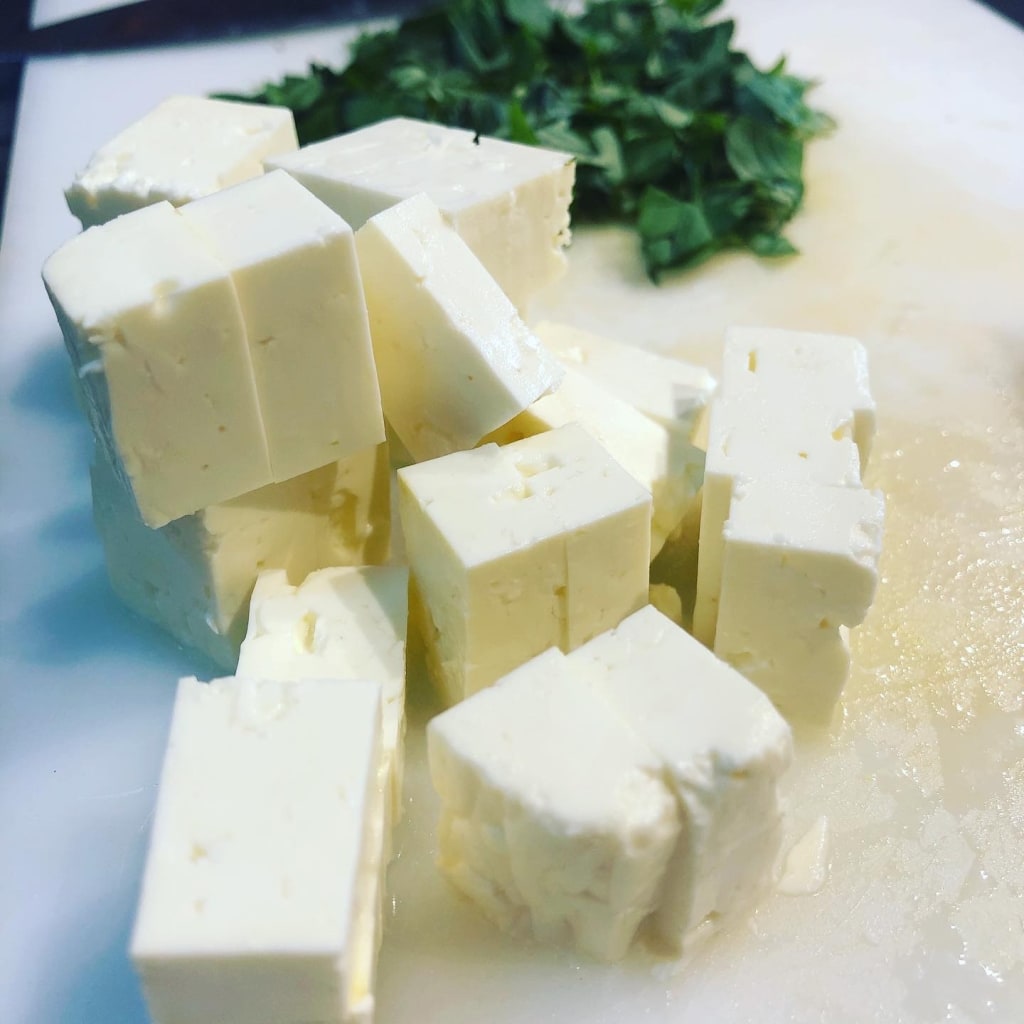
Why do I spell it fetta and not feta? I will use both spellings, but it depends on which type I'm referring to. Why is that? The reason is because if it's not specifically made in Greece, it's not spelled feta and here's why...
Greek feta is what's known as a P.D.O product which is a specific status given to their feta, and it stands for Protected Designation of Origin. P.D.O identifies a product as originating from a certain region, area or country. It also recognises the unique characteristics particular to the geographical environment. Feta has been a P.D.O product of Greece since 2002, and is made from fresh or pasteurised sheep’s milk and up to 30% goat’s milk from stock farmed on Greek soil.
There are a few areas in Greece that I know of that have a P.D.O status which are Dodoni, Epirus, Kalavryta, and Argos. There is a distinctive cheesemaking process which is particular to those regions, and the P.D.O stipulates that only Greece can export ‘feta’ to other countries.
Here in Australia, we have a number of Greek brands that are imported over to us, and if you haven't tried it, you don't know what you're missing - delicious!
Look, when I'm writing about fetta, I'm sure that the Feds won't come to kick in my door and take me away in handcuffs because I've spelled it, 'feta'. In fact, before I started making my own cheese, I only ever thought that the correct spelling was with one 't', not two. I'm also positive that it's not a crime if I refer to my homemade fetta as feta either, because I don't have my own brand that I'm trying to sell. But since I started sharing posts on social media, etc, I thought out of respect for the Greek cheesemakers that I would refer to my homemade fetta as that, along with other brands that don't have the P.D.O status.
Speaking of homemade fetta, here is the recipe on how to make your own. You can watch the video I made, or read the instructions below. I hope you enjoy it.
Ingredients
- 4 Litres Unhomogenised Milk
- 1/8 tsp Mesophilic Culture (or 1 x Sachet)
- 2ml Vegetarian Liquid Rennet (or 1 x Rennet Tablet)
- 30ml Cooled Down Boiled Water
- 2 tbsp Non-iodised Salt
Equipment
- Large Pot
- Wooden Spoon
- Slotted Spoon
- 2 Square Cheese Baskets
- Pipette
- Measuring Cup
- Thermometer
- Container with Draining Mat
- Long Knife
- Large Container
- Steriliser (Iodophor)
Step 1.
In a large container filled with 1 litre of cooled down boiled water, add a cap full of steriliser and stir in. Soak the utensils for at least 2 minutes.

Step 2.
Heat the milk to 32°C (about 85°F).

Step 3.
Add the culture and stir for about 3 minutes.
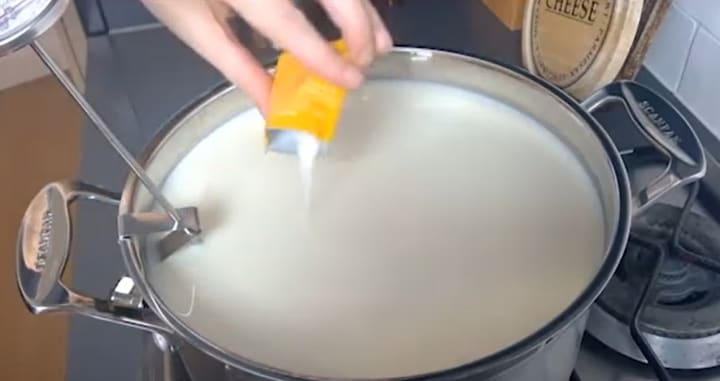
Step 4.
Mix in either the liquid rennet or the rennet tablet into the 30ml cooled down boiled water. If using a tablet, make sure that it is completely dissolved.

Step 5.
Pour the rennet solution into the milk and stir for about 1 minute. Leave it to sit for about 1 hour, maintaining the temperature at 32°C (about 85°F) throughout.
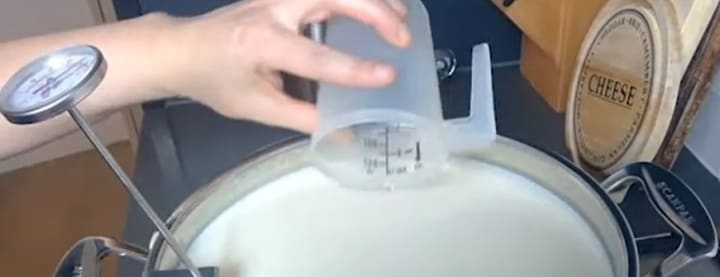
Step 6.
Check that the curd has set by making a cut. If there's a clean break, then it's ready to cut the curd. If it's not quite ready, let it sit for another 10-15 minutes and check again.
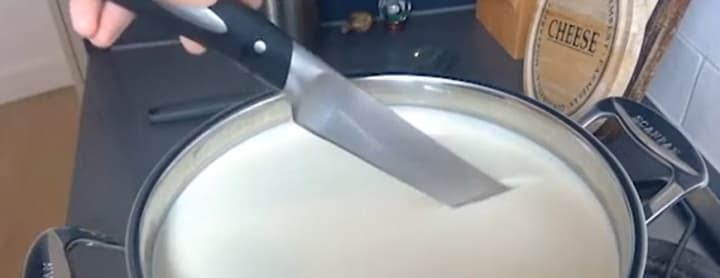
Step 7.
Cut the curd into approximately 2cm sized cubes and let it sit for 15 minutes.
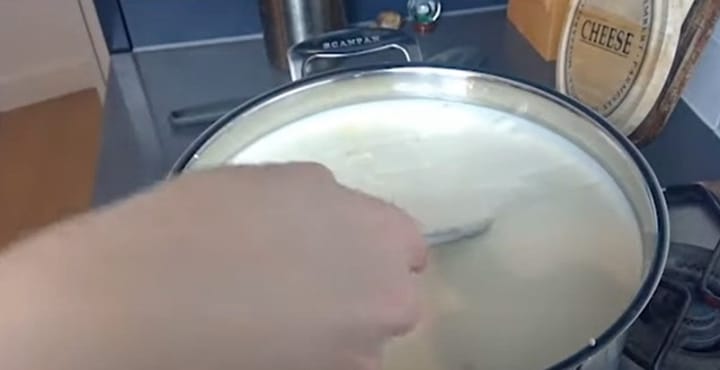
Step 8.
Gently stir the curd for 20 minutes, cutting any larger pieces to approximately 2 cm.
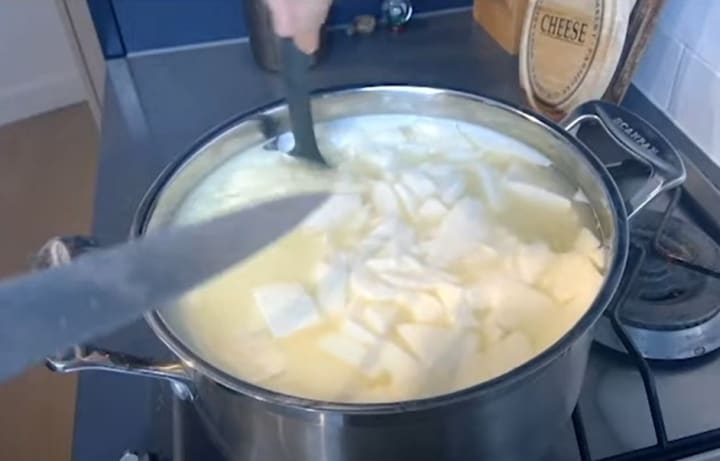
Step 9.
Ladle the curd into the cheese baskets.

Step 10.
Let the cheese drain for an hour, then flip them by taking it out of the basket, flipping it over to the other side, then putting it back into the basket to continue draining. After another hour, flip them again. Allow the cheese to drain overnight, or for a minimum of 12 hours. If possible, flip the cheese a couple more times.

Step 11.
Remove the cheese from the baskets and rub salt on all sides and put in a container on a draining mat. Leave it to sit at room temperature for 8 hours.

Eat straight away, or store in the fridge for up to 2-3 weeks.

About the Creator
Jess Boyes
From Melbourne, Australia, I love creative writing and food, particularly a good quality cheese or some sort of dairy.






Comments
There are no comments for this story
Be the first to respond and start the conversation.